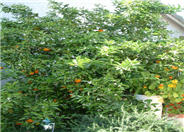
Common name:Sweet Orange cultivars
Botanical name:Citrus sinensis
This tree will grow 20'-30' high and 10'-15' wide; it produces sweet, tasty oranges. It has shiny green, leathery foliage and produces clusters of fragrant white flowers that bloom in the spring.
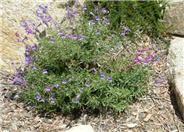
Common name:Foothill Penstemon
Botanical name:Penstemon heterophyllus
This perennial will grow 1.5'-2' tall and 2'-3' wide. It has glossy, blue green foliage with flowers that vary in color and bloom from spring through early summer.
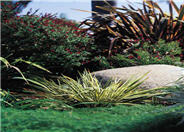
Common name:New Zealand Flax, Wings of Gold
Botanical name:Phormium 'Wings of Gold'
The Phormium is a dwarf, growing to only 2'-3' tall. The stiff, vertical leaves are olive green in color with a yellow margin. It should be grown under full to part sun.
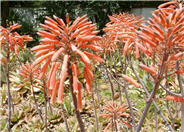
Common name:Shrimp Pink Aloe
Botanical name:Aloe saponaria
This succulent plant will grow about 2' high and has large, greenish/white leaves with orange, pink, and red flowers that bloom in spring and fall.
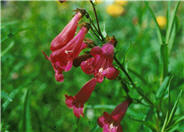
Common name:Garden Penstemon 'Cherry glo'
Botanical name:Penstemon hybrids 'Cherry Glo'
This Penstemon is tolerant of garden settings and produces bright red flowers in the spring and summer. In order to flourish, it requires good drainage.
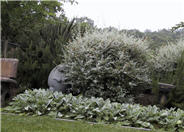
Common name:Bush Germander
Botanical name:Teucrium fruticans
This round shrub will reach about 12' high and has small, grayish silvery leaves with blue flowers that appear throughout the seasons.
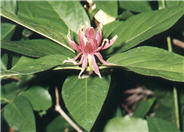
Common name:Spice Bush
Botanical name:Calycanthus occidentalis
A large, fast deciduous shrub growing to 12' tall and 15' wide, the Spice Bush bears large green leaves and small, dull red magnolia-like flowers with narrow petals. Its leaves are fragrant when crushed. The plant should be grown in partial sun or shade, with average to little summer watering and good drainage. -Monterey Bay Nursery
| Designer: Shelly Jennings | Orange Tree and Shrubs |
Photographer: GardenSoft |
Soils and Compost:
Incorporate compost 6" into your soil to retain water, reduce compaction, feed earthworms, and provide valuable nutrients to your plants.
Water Saving Tip:
Apply a layer of mulch around plants to reduce moisture loss.
Choose organic mulches, such as shredded bark, compost or aged sawdust.
Integrated Pest Management:
Drip and other smart irrigation delivers water directly to roots, allowing no excess water for weeds.
